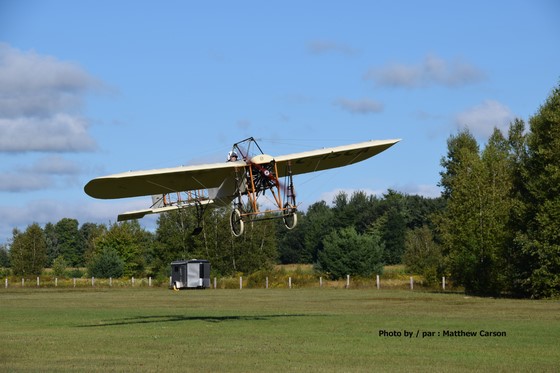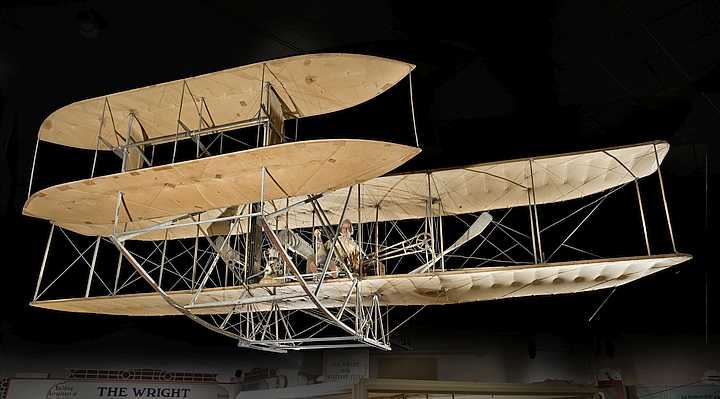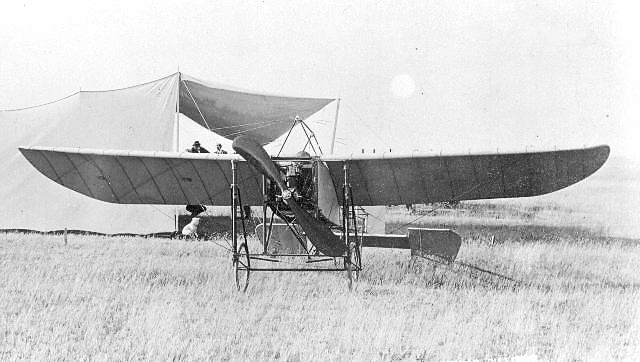This monoplane designed by the Frenchman Louis Blériot was one of two aircraft exhibited by Jacques de Lesseps at the Montréal and Toronto air meets in 1910. A Blériot XI, it was powered by a 25 hp Anzani engine. Photo: Canada Aviation and Space Museum #11255.
IT’S THE YEAR TO CELEBRATE OUR AVIATION HISTORY
HERE’S YOUR PERSONAL INVITATION
FOR JULY 15
Heritage Toronto, the RCAF 400 Squadron Historical Society and the Canadian Aviation Historical Society Toronto Chapter have joined together with Heritage Toronto to recognize the Trethewey Airfield’s importance in Canadian aviation history.
On Saturday, 15 July 2017, at 10:45 a.m., an official plaque will be unveiled in Toronto at Hearst Circle and “The Wishbone”, Mount Dennis. A reception will follow nearby at The Atrium, 12 Division Police Station, 200 Trethewey Drive, North York.
You’ll need a ticket. A small donation is requested in lieu of a set fee. Click on the link to order tickets online:
Why Be There?
My own reason is a family tie-in. My uncle Howard Watt, one of Toronto’s early aviators, tested the idea of setting up an air service at the Trethewey farm some 90 years ago. Instead, he chose a location on Yonge Street (north of today’s Highway 401) later known as the Willowdale Airfield.
But the Trethewey connection with aviation goes back more than a century.

A French monoplane, the Blériot XI, flies above the crowds at Trethewey Model Farm during the Toronto Air Meet in July 1910. Photo: Canada Aviation and Space Museum #20713.
Site of Toronto Air Meet – 1910
In July 1910, thousands of spectators flocked to William Griffith Trethewey’s Model Farm near Weston, Ontario, to see “strange bird-monsters soaring through the Air” as The Globe reported on July 9.
The occasion was the second air meet held in Canada. Sponsored by the Ontario Motor League, the event ran for a full week, with performances starting in late afternoon so people could attend after they left work.
Montréal had hosted Canada’s first air meet the previous week at what is now Pointe Claire. When the events wrapped up, pilots and mechanics loaded all their aircraft and equipment into railway cars and travelled via the Grand Trunk Railway to the village of Weston, not far from Toronto.
Featured stars at the air meet were the Wright Fliers from the United States with two Wright biplanes (30 hp Wright motors), and – from France – Count Jacques de Lesseps with two Blériot monoplanes including the famed Le Scarabée (50 hp Gnome engine), in which he had made the second crossing of the English Channel just two months earlier.
The Globe of 9 July 1910 described de Lesseps’ monoplane rising into the air like a “large bird with graceful white wings outspread,” circling the field three times, then “alighting to receive the plaudits of the spectators.” De Lesseps himself was described as a tall, slender man with a gentle, dreamy expression that “really fits in with one’s ideas of what the pioneers in aviation should be.”

Full-scale replica of Le Scarabée, de Lesseps’ Blériot XI, built by volunteers of the Canadian Aviation Heritage Centre, Ste-Anne-de-Bellevue, Québec. Flown August 29, 2014, by Robert Erdos, chief test pilot with the National Research Council of Canada. Photo: Montréal Aviation Museum.
Wright Biplane Catapults into Air
Also performing was the Wright Company’s biplane, “more imposing, though scarcely as graceful a machine” as the Blériot, to quote The Globe. Count de Lesseps may have won the hearts of the public with his persona, but the Wright biplane was far ahead in terms of technology, using a catapult launching system for takeoff. The Globe described it sliding along a monorail then sailing some fifteen feet above the ground for a hundred yards before rising into the air. For landing, in place of wheels, the Wright aircraft had two sturdy skids. Wheels could be attached under the wings to manoeuver it on the ground.

1909 Wright Type A/ Military Flyer on display at the Smithsonian National Air and Space Museum, Washington, D.C. The biplane flown at the 1910 Toronto meet was similar but included a new element, a horizontal tail surface behind the vertical rudders. Photo: National Air and Space Museum, Smithsonian Institution.
De Lesseps Makes First Flight over Toronto
In the end, de Lesseps stole the show with his flight over the city of Toronto in Le Scarabée on July 13. From Weston, he made his way to Sunnyside, circled out over Humber Bay on Lake Ontario, and flew back in over the Exhibition grounds, before returning to the Trethewey property. The Globe reported that he travelled 24 miles in half an hour, and when he landed his barometer showed he had reached an altitude of 3,500 feet. Ecstatic crowds wrapped him in the French flag and paraded him on their shoulders in front of the grandstand as the audience shouted a resounding three cheers.
In memory of the French count, the field at Trethewey Farm would be known as the “de Lesseps Airfield” or “de Lesseps Airport” until it was closed in 1940.
Acknowledgements
Special thanks to George Fuller for comments on a draft of this post, and for research suggestions. As always, the author takes sole responsibility for any errors of fact or interpretation. Please send a comment if you spot something that needs to be fixed – or if you just want to share your thoughts on the topic.
Sources and Links
“August 29 (2104) – Blériot XI First Flight.” http://www.cahc-ccpa.com/en/august-29-bleriot-xi-first-flight Accessed 8 July 2017.
Fuller, G.A., J. A. Griffin and K.M. Molson, 125 Years of Canadian Aeronautics: A Chronology 1840-1965. Willowdale, Ontario: Canadian Aviation Historical Society, 1983, pp 31-37.
Galway, Robert D. The Early Airfields of Toronto: From de Lesseps to de Havilland and Beyond. Toronto: Privately published, 2016.
Hotson, Fred W., The de Havilland Canada Story. Toronto: CANAV Books, 1983.
Jacques de Lesseps Biography. http://www.avionslegendaires.net/biographie/comte-jacques-de-lesseps/ Accessed 6 February 2016.
Kostenuk, S. and J. Griffin, RCAF Squadrons and Aircraft 1924-1968. Toronto: Hakkert, 1977, pp. 40-41.
McGrath, T. M., History of Canadian Airports. Toronto: Lugus, 1992, pp. 7, 307.
The Globe, 9 July 1910, p. 1. “Navigators of the air gather for daring feats.”
The Globe, 14 July 1910, p. 1. “Daring flight over city made by Count de Lesseps.”
The Globe, 26 April 1926, p. 11. “Flights and test landings being tried by aviators.”
Toronto Daily Star, 8 September 1926, p. 10. “Howard Watt Air Service to be established at Willowdale.”
“The Airplane Business.” http://www.wright-brothers.org/History_Wing/Wright_Story/Airplane_Business/Airplane_Business_Intro.htm Accessed 7 July 2017.
“Wilbur Wright flies Model A Flyer during first public flight.” https://www.youtube.com/watch?v=RriKI7u72Xs Accessed 8 July 2017.


For those of you who noticed, the feature photo did not in fact show Le Scarabée. The aircraft shown is actually de Lesseps’ second Blériot XI, which had a less powerful motor (25 hp Anzani) than Le Scarabée (50 hp Gnome motor). My apologies that I was not able to verify the facts before publication. I’ve now corrected the photo caption. Diana
Hi Diana;
Robert Bradford picked up on a caption in my Early Airfields book identifying an image as de Lesseps standing in front of the Bleriot “le Scarabee”, printed as provided by the City of Toronto Archives.
I received a note from him pointing out that the engine shown is a 3-cylinder motor, therefore this is not Le Scarabee (which had a 7-cylinder engine)! He provided a valuable and unimpeachable reference ….. Canadian Aeronautics: A Chronology by George Fuller et al.!
Hope I am that sharp in ten years.
Thanks for attending the Dedication.
R. Galway
Wonderful and informative article. I hope you are planning to attend the function on the 15th of July.
I’ll be there for sure!